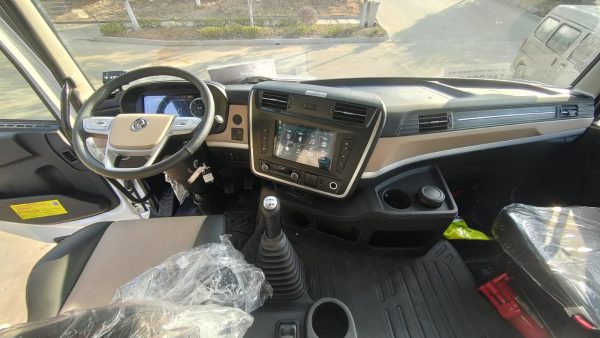Maximizing Efficiency A Comprehensive Guide to Garbage Compactor Truck Capacity

Introduction
Garbage compactor trucks play a crucial role in waste management systems worldwide. These specialized vehicles are designed to collect and transport large volumes of solid waste efficiently. One key factor that determines the effectiveness of a garbage compactor truck is its capacity. In this comprehensive guide, we will explore the various aspects of garbage compactor truck capacity, including its importance, types of compactor trucks, factors affecting capacity, and strategies to maximize efficiency.
Importance of Garbage Compactor Truck Capacity
The capacity of a garbage compactor truck refers to the volume of waste it can hold and transport in a single trip. An adequate capacity is essential for ensuring the smooth and uninterrupted collection of waste from residential, commercial, and industrial areas. Insufficient capacity can lead to frequent trips to disposal sites, increased fuel consumption, and higher operational costs. On the other hand, an oversized capacity can result in underutilization of the vehicle and inefficiency in waste collection.
Types of Garbage Compactor Trucks
Garbage compactor trucks come in various types and sizes to suit different waste collection needs. what is a tanker truck of compactor trucks based on capacity are:
1. Rear Loaders: Rear loader compactor trucks are commonly used for residential waste collection. These trucks have a moderate capacity and are suitable for collecting waste from households and small businesses. Rear loader trucks typically have hydraulic compactors that compress the waste to maximize the volume.
2. Front Loaders: Front loader compactor trucks are larger in size and have higher capacities compared to rear loaders. These trucks are commonly used for commercial and industrial waste collection. Front loader trucks have a front-loading mechanism that allows for easy loading of large waste containers.
Factors Affecting Garbage Compactor Truck Capacity
Several factors can influence the capacity of a garbage compactor truck. Understanding these factors is essential for optimizing the performance and efficiency of waste collection operations. Some of the key factors affecting compactor truck capacity include:
1. Size and Design: The physical dimensions and design of a compactor truck play a significant role in determining its capacity. Trucks with larger storage compartments and efficient compactors can hold more waste per trip.
2. Compaction Ratio: The compaction ratio refers to the extent to which waste is compressed inside the truck's storage compartment. Higher compaction ratios result in more efficient use of space and increased capacity.
3. Waste Density: The density of the waste being collected can vary based on factors such as moisture content, composition, and packaging. Denser waste requires less storage space, allowing the truck to carry more waste per trip.
4. Route Efficiency: The efficiency of the waste collection route can impact the effective capacity of a garbage compactor truck. Optimizing collection routes to minimize travel time and distance can help maximize the truck's capacity utilization.
Strategies to Maximize Efficiency
To maximize the efficiency of garbage compactor trucks and optimize their capacity, waste management authorities and operators can implement the following strategies:
1. Regular Maintenance: Proper maintenance of compactor trucks is essential to ensure optimal performance and capacity. Regular inspections, servicing, and repairs can help prevent breakdowns and downtime that can affect operational efficiency.
2. Training and Education: Providing training to drivers and operators on proper waste loading techniques, compaction methods, and route optimization can help maximize the capacity of compactor trucks. Educated and skilled personnel can ensure efficient waste collection operations.
3. Smart Scheduling: Implementing smart scheduling practices, such as prioritizing high-volume collection sites, coordinating multiple trucks for simultaneous collection, and adjusting routes based on real-time data, can help improve capacity utilization and operational efficiency.

4. Upgrading Technology: Investing in advanced technologies such as onboard sensors, GPS tracking systems, and route optimization software can enhance the performance of garbage compactor trucks. These technologies can provide real-time data and insights to streamline operations and maximize capacity.
Conclusion
Garbage compactor truck capacity is a critical factor that influences the efficiency and effectiveness of waste collection operations. By understanding the importance of capacity, types of compactor trucks, factors affecting capacity, and strategies to maximize efficiency, waste management authorities and operators can optimize the performance of their fleets. Maximizing the capacity of garbage compactor trucks not only improves operational efficiency but also contributes to sustainable waste management practices and environmental conservation efforts.
